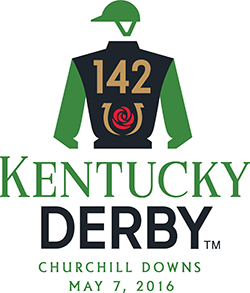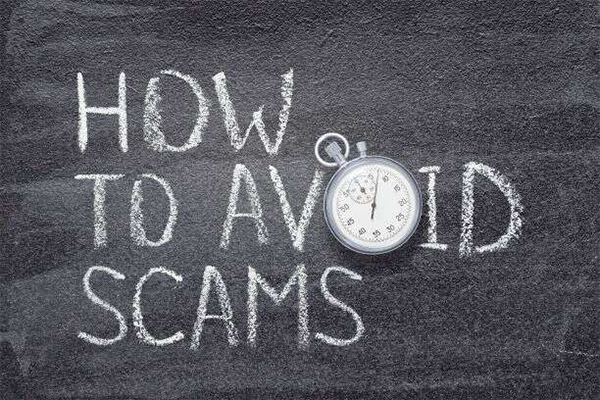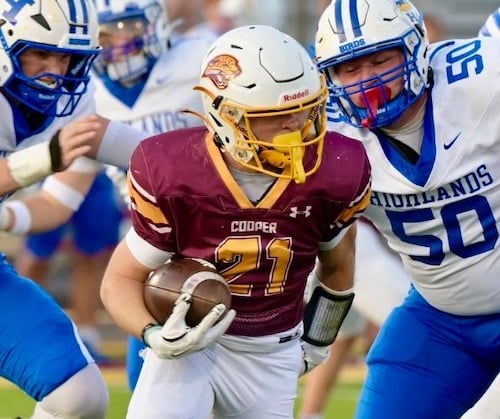LOUISVILLE – At some point this afternoon, there will be a subtle change of emphasis at venerable Churchill Downs in Louisville’s South End. The only ones who will notice, of course, are the romantics and dreamers who understand that the Kentucky Derby is not about the mint juleps or the big hats or the flashing of bankrolls.
It’s about the 20 thoroughbreds that will spring out of the starting gate in the hope of finding the kind of immortality that only the Derby can bestow. No other race has its own museum next door because no other race means as much to the owners who buy or breed the horses, the trainers who nurture and develop them, and the jockeys who guide them.
 In his fine song Run for the Roses, Dan Fogelberg calls the Derby “the chance of a lifetime in a lifetime of chance.” It’s all that and more. Think about the odds. Of the 25,000 thoroughbred foals born every year in North America, a maximum of only 20 will make it into the Derby starting gate.
In his fine song Run for the Roses, Dan Fogelberg calls the Derby “the chance of a lifetime in a lifetime of chance.” It’s all that and more. Think about the odds. Of the 25,000 thoroughbred foals born every year in North America, a maximum of only 20 will make it into the Derby starting gate.
And of those 20, only one will be able to wear the blanket of red roses that is thrown over the Derby winner’s back. In case you were wondering, there has never been a dead heat for the win in the Derby’s 141-year history, although Grindstone and Cavonnier came close in 1996. The photo of the finish showed that Grindstone was a nostril ahead when the two hit the wire in tandem.
For almost 142 years, writers have tried with indifferent success to capture the Derby’s mystique. The novelist William Faulkner took a good stab at it when Sports Illustrated hired him to do a Derby piece in 1955. And gonzo journalist Hunter S. Thompson, who grew up in Louisville, provided a, uh, different perspective when he wrote a magazine short story entitled, “The Kentucky Derby Is Decadent and Depraved.”
Like a good julep, the Derby must be taken slowly and savored. It must be consumed within the context of history and tradition. It has been run over the same plot of ground since 1875, and the peripheral stuff – the juleps, the roses, the singing of My Old Kentucky Home, the hats, and the lavish Derby eve parties – have been added randomly and whimsically through the years due to one forgotten reason or another.
All those peripheral things are part of the Derby’s charm, as are the Derby Festival events – a parade down Broadway, races for rodents and steamboats, and an evening fireworks display on the banks of the Ohio River that draws crowds estimated at 300,000 or more. But all that matters, really, is what happens in late afternoon on the first Saturday in May.
Maybe the Derby becomes less of a party and more of a transcendent experience when the trainers give their jockeys a leg up in a paddock crowded with an eclectic admixture of politicians, celebrities, horsemen, and hustlers. Or maybe it’s when the first horse comes out of the tunnel that connects the paddock to the track. It’s about here that everyone pauses to sing My Old Kentucky Home, that haunting lament that turns even hard-hearted gamblers from the nation’s big cities into Kentuckians, at least for a few moments.
Or maybe it’s when the last horse is loaded into the starting gate and the noise begins growing until it reaches an unholy crescendo. The track announcer says, “They’re all in,” and moments later the gate opens, much to the relief of everyone who has been waiting to exhale.
The horses are competing against each other, mainly, but they also are competing against the ghosts of racing’s past. Of course, only the dreamers and romantics can see, hear, and feel the ghosts. The handicappers are too busy with their statistics, figures, and theories. The bettors are figuring out how much they’ve won or lost.
And the corporate CEOs and their guests, bless their flinty Wall Street hearts, are straining to see the race from their luxury boxes, but aren’t as concerned with who wins as how quickly their limos can get them away from the track and to their private planes parked at Standiford Field.
But the dreamers, well, they can show you exactly where the great jockey Bill Shoemaker misjudged the finish line and blew the race in 1957. They can show you where that same Shoemaker guided Ferdinand through a hole on the rail to win the roses in 1986. They can show you where in the stretch Alysheba clipped a rival’s heels and almost went to his knees. Instead, jockey Chris McCarron hung with him and got him going in time to save the victory for trainer Jack Van Berg.
The dreamers don’t necessarily believe in luck, but they do believe in the racing gods. As Van Berg once said, “It’s not always who has the best horse, it’s who the star shines on that particular day.” Sometimes the racing gods smile on brilliant runners and sometimes they smile on Mine That Bird, who won the 2008 Derby mainly because jockey Calvin Borel did a virtuoso job of guiding him in and out through the Derby traffic.
Once the gods have picked you, your life is never the same. Listen to Carl Nafzger, the erstwhile rodeo cowboy who won the Derby with Unbridled in 1990 and Street Sense in 2007.
“When you meet somebody on a plane and they hear you’re in the horse business, their first question is, ‘Have you ever had a horse in the Kentucky Derby?’ When you tell them that you’ve won it, they are full of questions. I didn’t like it one time when a guy asked me if training was a full-time job.”
The Derby trip is a magical mystery tour that must be negotiated boldly and carefully at the same time. A lot of things can happen when 20 horses gather to run 1 ¼ miles for the first time in their lives, and most of them are not good. For every Shoemaker who gets through on the rail, there are 20 riders who have horror stories about getting caught in Derby traffic and not finding a path until it was too late.
Jockey Pat Day, who won the Derby aboard Lil E Tee in 1992, still rues the Derby he lost aboard Easy Goer in 1989. It was cold and wet that day, and Easy Goer never got comfortable with the track conditions. “No disrespect to Sunday Silence (the winner),” says Day, “but I felt, and still feel, that I had the best horse in the race.”
Although almost every trainer and jockey who has never won the Derby will say that he or she doesn’t need a Derby victory to make his or her career complete. They lie. If and when they are finally ushered into the Derby’s winner circle, you can sense the relief as much as you can see and hear the joy.
Any discussion of the field for Derby 142 must begin with Nyquist.
Named for Gustav Nyquist, a Swedish hockey player who now skates for the Detroit Red Wings, the colt is unbeaten in seven starts. He left his home base in California to win last year’s Breeders Cup juvenile at Keeneland and he came east again this April to see if he could beat the highly regarded Mohaymen and earn a $1 million bonus for which he was eligible.
He accomplished his goals in a professional manner, much as his namesake does when he laces up his skates and hits the ice. Yet he’s only a lukewarm Derby favorite and nobody is sure why, given his credentials. It could have something to do with the racing gods. Sometimes they like to play with the handicappers, so they give a horse an aura that nobody can figure out.
To join the immortals, Nyquist must put away a diverse field that includes horses representing owners from Japan and Saudi Arabia. He must worry about two colts that are owned by the fellow who also owns the New Orleans Saints of the NFL and Pelicans of the NBA. He must contend with four gray horses, a rarity, and with three trainers who served apprenticeships under the legendary D. Wayne Lukas, a four-time Derby winner who’s sitting this one out.
“You’ll see us next year, though,” Lukas said. “We’ve got some 2-year-olds who are really impressing me.”
Soon as the Derby is over, the ghosts vanish and many in the crowd begin hustling for the exits, hoping to beat the usual massive traffic jam. Meanwhile, a groom leads the winner around the track and back to the barn area so his post-race urinalysis can be collected by chemists representing the Kentucky State Racing Commission.
It won’t be known until Sunday or Monday if the Derby winner has passed his drug test. So far Dancer’s Image, who beat Calumet Farm’s Forward Pass in 1968, is the only Derby winner to be disqualified for failing the post-race drug tests. It took five years for that case to go through the court system, but to this day nobody knows for sure exactly what happened.
Dancer’s Image was owned by Peter Fuller, who ran a Cadillac agency in Boston. This year Boston is represented by partners J.W. Bligh, Sol Kumin and Jay Hanley, who hail from the Boston area and own My Man Sam.
Throughout his career, the owners hoped he would be good enough to make the Derby field. Alas, however, he almost got shut out due to their mismanagement. One day somebody pointed out that My Man Sam didn’t have enough points to qualify for the Derby unless they did something drastic.
Their answer was to send him on a kind of mission impossible to the Blue Grass Stakes at Keeneland on April 9. Needing to run first or second to qualify for the Derby, My Man Sam came from far off the pace to steal second from Cherry Wine just strides before the wire.
But with all due respect to Brody’s Cause and the other winners of major prep races – Nyquist in the Florida Derby, Outwork in the Wood Memorial, Exaggerator in the Santa Anita Derby, Gun Runner in the Louisiana Derby and Creator in the Arkansas Derby – this might be the year the racing gods let their star twinkle over the camp of Mohaymen.
The colt runs in the blue colors of Shadwell Stable, which is owned and operated by Sheikh Hamdan bin Rashid Al Maktoum of Dubai. The sheikh has literally spent a small fortune at American sales in search of a Derby winner, but so far his efforts have been in vain.
For a few weeks in late February and early March, Mohaymen was impressive enough to wrest the Derby favorite’s role away from Nyquist, who came east to test his rival (and win that million-dollar bonus) in the Florida Derby. That race turned out to be a certification of Nyquist’s talent and a bandwagon-stopper for Team Mohaymen. The colt faded to fourth and nobody knows why.
As for McLaughlin, he’s a graduate of Lexington’s Bryan Station High and one of three trainers in the race who understudied Lukas before going out on his own (the others are Dallas Stewart, who trains Tom’s Ready for sports owner Tom Benson, and Todd Pletcher, who will put the saddles on Outwork and Destin.) Plagued for years by Multiple Sclerosis, McLaughlin didn’t let the disease keep him from getting one of the most coveted training jobs in the world.
Dale Romans winks at the ghosts and genuflects before the racing gods because he has an obsession with winning the Derby. A son of trainer Jerry Romans, Dale grew up in Louisville’s South End, not far from Churchill.. When he became old enough to get his driver’s license, he also quit school so he could go to work on the race track.
His passion for winning the Derby might hurt him sometimes. He wants it so badly that he tends to oversell himself and others on his horses. Every time he gets a Derby colt, he says it’s the best one he has ever entered. You can set your watch by him. It’s almost as if Romans is trying to get to the Derby winner’s circle by sheer force of will, and that just never works. The racing gods, and only the racing gods, will decide if and when it’s his turn, so Dale might as well relax and enjoy the moment.
Early last week, a rookie Derby trainer said he was looking at the Run for Roses as “just another race at just another track.” He’s lucky Romans or McLaughlin didn’t hear him. They might have called the cops and had him arrested on the spot for blasphemy. Didn’t the guy see what American Pharoah did last year? Doesn’t he understand that every sport needs a hallowed event and the Derby is just that for thoroughbred racing?
It will be interesting to see if the trainer feels the same way about the Derby after he experiences it. The Derby is the sort of thing that changes reputations and careers in two minutes, give or take a few ticks of the stopwatch. So it’s best to approach the Derby gingerly and respectfully.
If you want to come back, in other words, it’s best to not to aggravate the racing gods, not to mention horsemen like McLaughlin and Romans, who have suffered one crushing disappointment after another in noble pursuit of the prize that horsemen have been stalking for 142 years.
Billy Reed is a member of the U.S. Basketball Writers Hall of Fame, the Kentucky Journalism Hall of Fame, the Kentucky Athletic Hall of Fame and the Transylvania University Hall of Fame. He has been named Kentucky Sports Writer of the Year eight times and has won the Eclipse Award twice. Reed has written about a multitude of sports events for over four decades, but he is perhaps one of media’s most knowledgeable writers on the Kentucky Derby






















